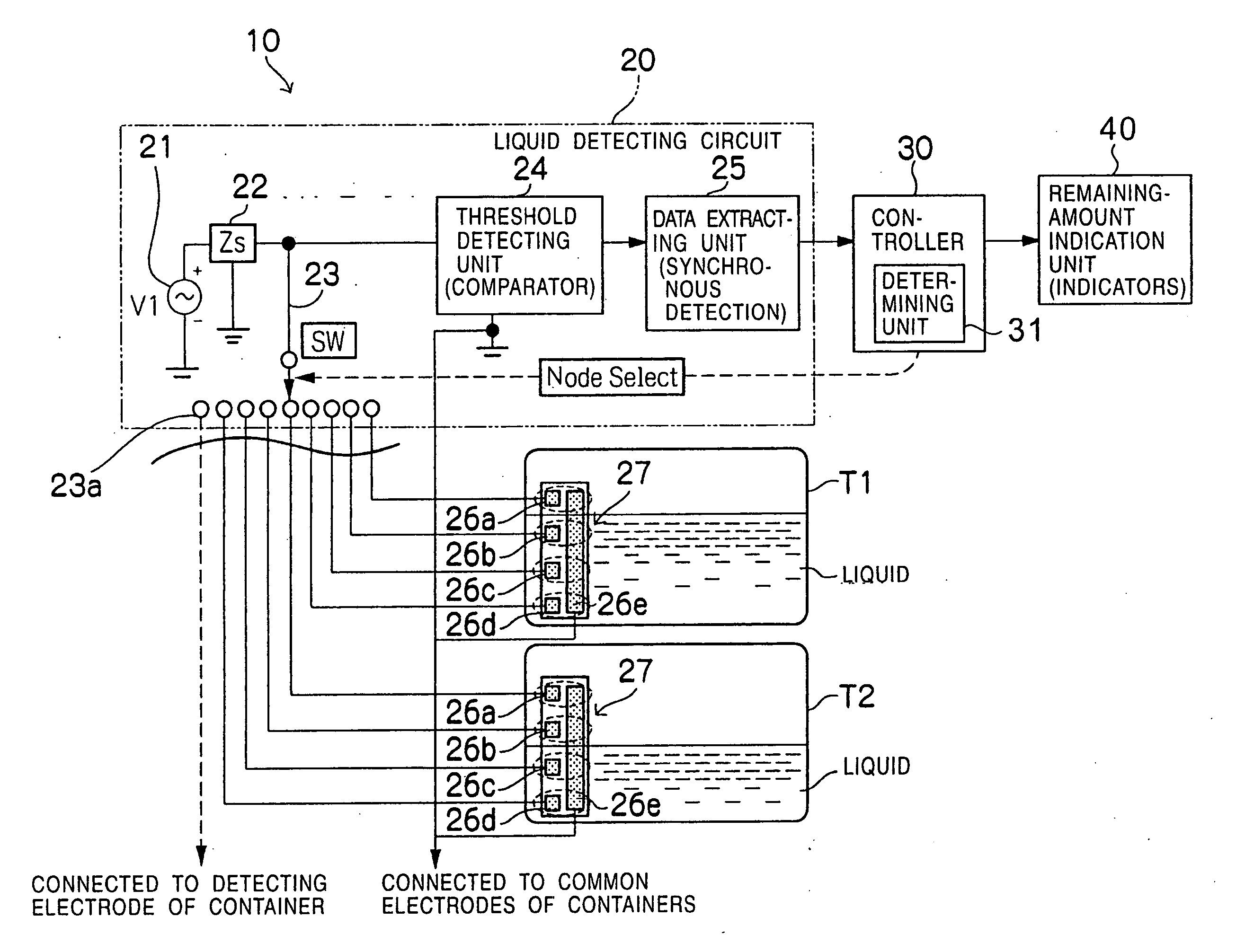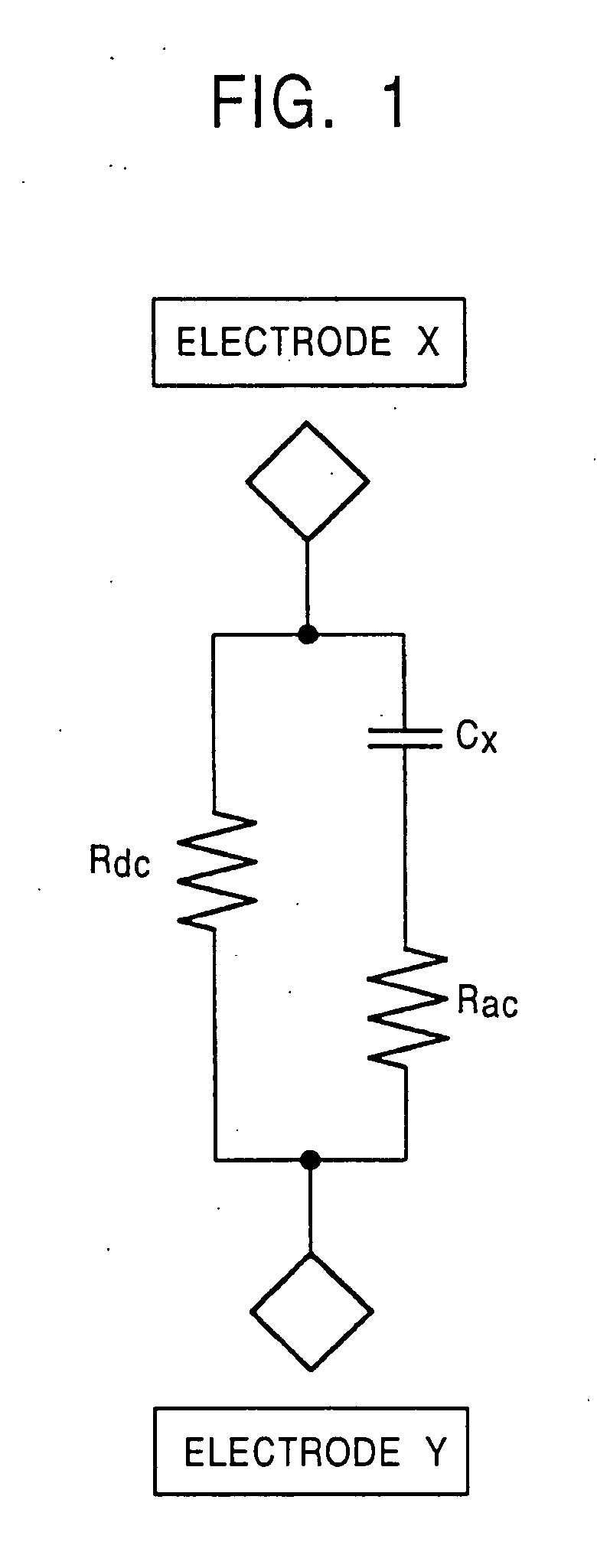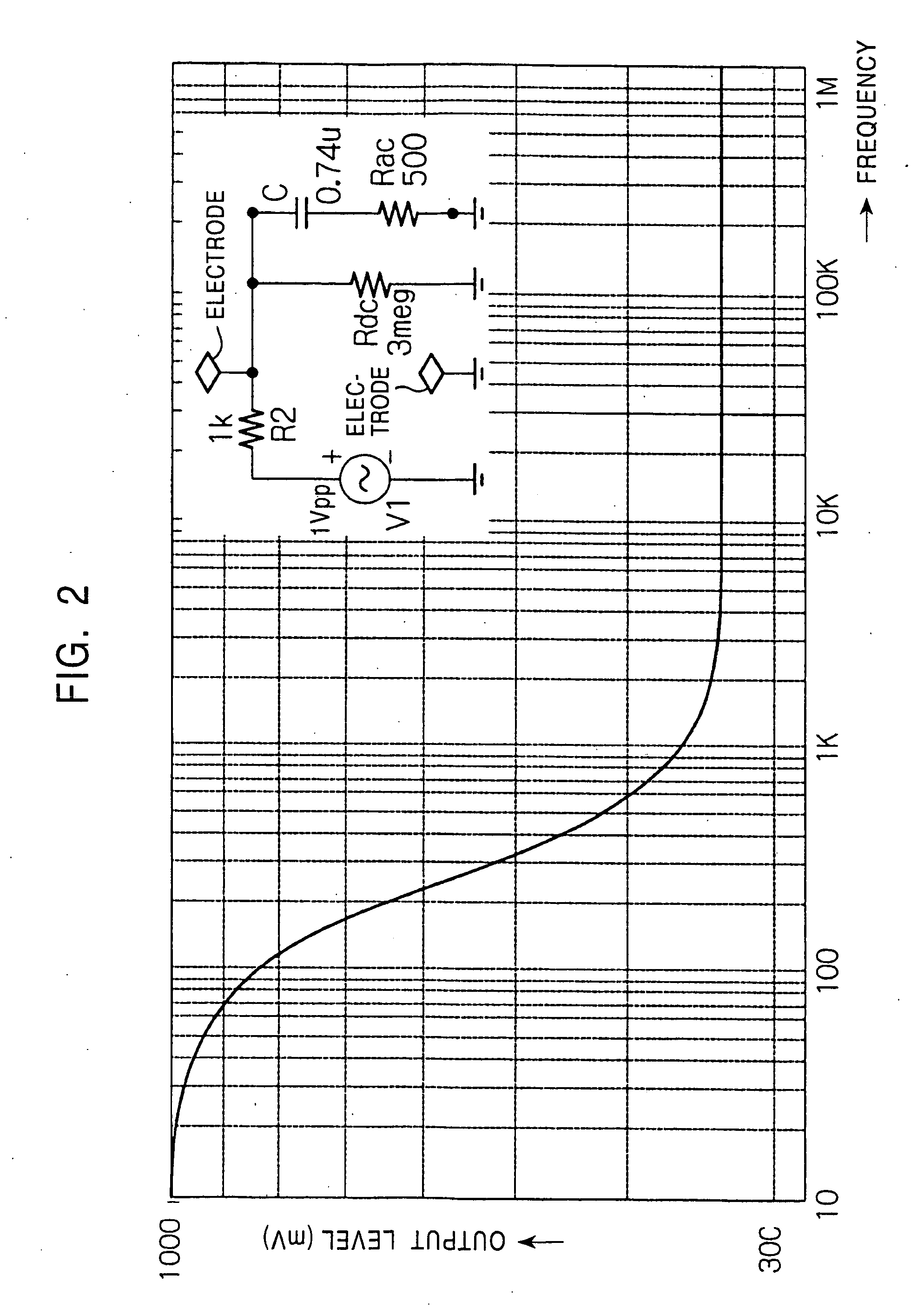Liquid detecting apparatus, liquid-amount detecting apparatus, liquid detecting method, and liquid-amount detecting method
a technology of liquid detecting apparatus and liquid detecting method, which is applied in the direction of liquid/fluent solid measurement, machines/engines, instruments, etc., can solve the problems of inability to visually determine the remaining amount of ink from the external appearance of the ink tank, inability to use the ink that serves as a “primer” and other problems, to achieve the effect of improving detection reliability, avoiding change in liquid characteristics, and increasing detection speed
- Summary
- Abstract
- Description
- Claims
- Application Information
AI Technical Summary
Benefits of technology
Problems solved by technology
Method used
Image
Examples
first embodiment
[0059] First Embodiment
[0060]FIG. 4 is a diagram showing the construction of a liquid-amount detecting apparatus 10 according to a first embodiment of the present invention. As shown in FIG. 4, a conductive liquid that is to be detected by the liquid-amount detecting apparatus 10 is contained in containers T (T1 and T2).
[0061] For example, if the liquid-amount detecting apparatus 10 is used in an ink-jet printer, the containers T are ink tanks, and the liquid in the containers T is ink that is used in the ink-jet printer. In the case of a color ink-jet printer that uses ink of a plurality of colors, a container T (ink tank) is provided for each of the colors.
[0062] The liquid-amount detecting apparatus 10 according to this embodiment includes a liquid detecting circuit 20, a controller 30, and a remaining-amount indication unit 40.
[0063] The liquid detecting circuit 20 includes an AC-signal source (V1) 21, an impedance (Zs) 22, a switch (SW) 23, a threshold detecting unit 24, a d...
second embodiment
[0105] Second Embodiment
[0106]FIG. 7 is a waveform chart showing a second embodiment of the present invention, and it corresponds to FIG. 5 for the first embodiment.
[0107] In the first embodiment, the AC signal with a DC component having been removed therefrom is a rectangular wave; whereas in the second embodiment, a sine wave is used.
[0108] In FIG. 7, an original signal output from the AC-signal source 21 is a rectangular wave, as shown in part (A). This signal is converted, for example, through a low-pass filter, into a sine (or like) wave shown in part (B).
[0109] The signal shown in part (B) is obtained by converting a rectangular wave into a sine (or like) wave and removing a DC component from the sine wave. In part (A) of FIG. 7, as compared with part (A) of FIG. 5, the phase is shifted by ¼, as indicated by P5. Thus, the sine wave crosses 0 V at 1, 2, 3, . . . μsec.
[0110] Then, detection is performed when the clock signal rises (when the sine wave reaches a minimum level)...
third embodiment
[0113] Third Embodiment
[0114]FIG. 8 is a circuit diagram showing a third embodiment of the present invention, and it corresponds to FIG. 6 for the first embodiment. FIG. 9 is a waveform chart relating to the circuit diagram shown in FIG. 8, and it corresponds to FIG. 5 for the first embodiment.
[0115] In the first embodiment, power sources of ±5 V are required, as shown in FIG. 6. In contrast, in the third embodiment, only a power source V2 of +5 V suffices to achieve the same functions as the first embodiment.
[0116] In this circuit, the average voltage of measurement equals the DC component of the clock signal. Thus, if a 5 V power source is used, measurement is performed at 2.5 V or nearly as a center. For the purpose of comparison, a DC power source V3 of 2.2 V, connected to the base of the transistor Q2, is used.
[0117] Furthermore, although all the nodes 23a of the switch 23 are connected to the detecting electrodes 26a to 26d in the first embodiment, a node 23a′ that is conne...
PUM
 Login to View More
Login to View More Abstract
Description
Claims
Application Information
 Login to View More
Login to View More - R&D
- Intellectual Property
- Life Sciences
- Materials
- Tech Scout
- Unparalleled Data Quality
- Higher Quality Content
- 60% Fewer Hallucinations
Browse by: Latest US Patents, China's latest patents, Technical Efficacy Thesaurus, Application Domain, Technology Topic, Popular Technical Reports.
© 2025 PatSnap. All rights reserved.Legal|Privacy policy|Modern Slavery Act Transparency Statement|Sitemap|About US| Contact US: help@patsnap.com



